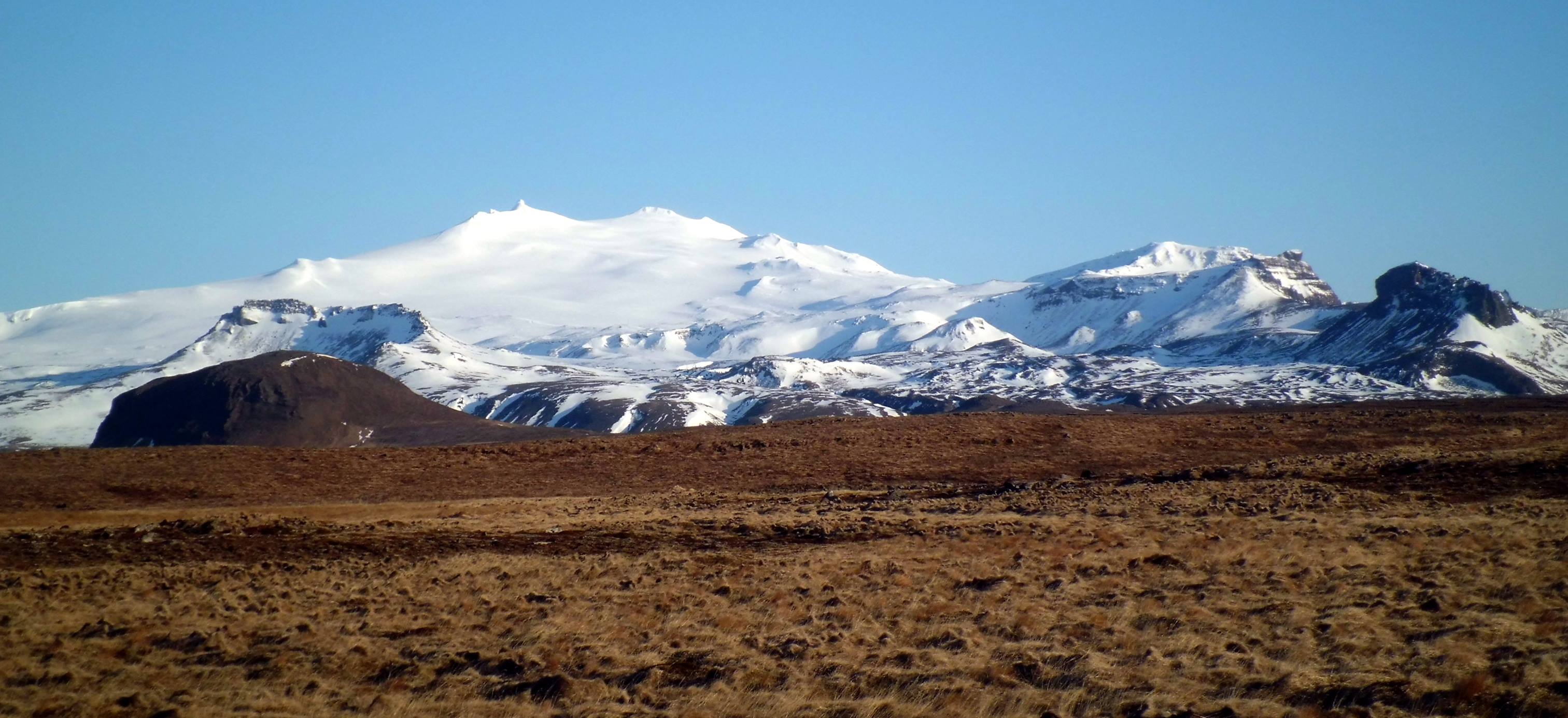Vinna við nýjar heimasíður Umhverfis- og orkustofnunar og Náttúruverndarstofnunar er í gangi. Heimasíða Umhverfisstofnunar er virk á meðan vinnunni stendur. Information in English
The Glacier
The Snæfellsjökull glacier is 1446m (4745 ft) above sea level. It was first climbed in 1754.
The mountain is an active volcano, having been built up through numerous eruptions during the last 800,000 years. The summit crater is 200m (650 ft) deep, full of ice. The glacier has shrunken somewhat in recent years. The flanks of the glacier are particularly attractive with intertwining lava streams forming long “plaits” down the slopes. The latest eruption was very large and took place around 1800 years ago. Light-coloured ash covered the northern half of Snæfellsnes Peninsula and was carried over much of the West Fjords. Lava flowed down the southern slopes of the mountain and the Háahraun lava field was formed during this eruption.

The glacier has been a never-ending source of inspiration for poets and artists from around the world. Indeed, more than a few people say they feel a powerful influence from the glacier and consider it to be one of the world’s seven most potent energy sources.